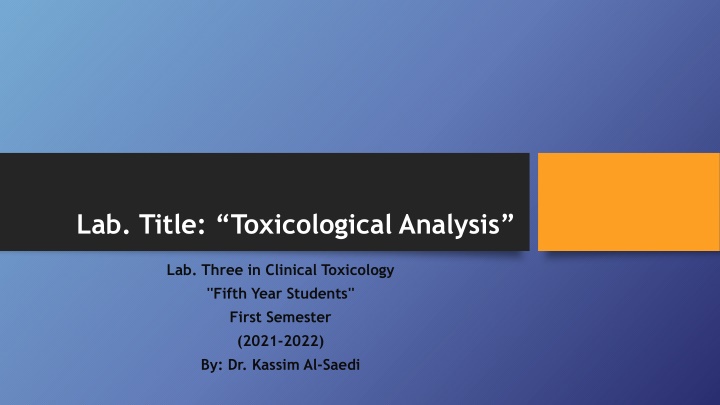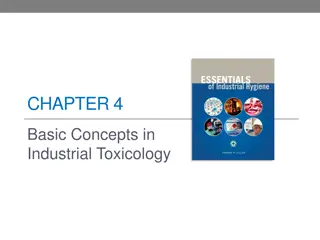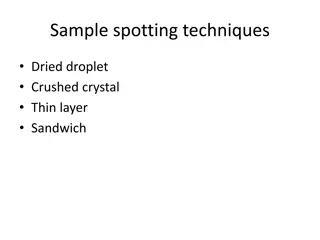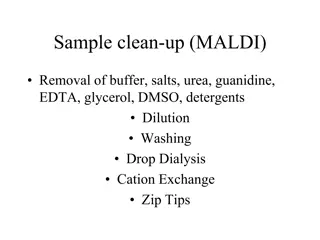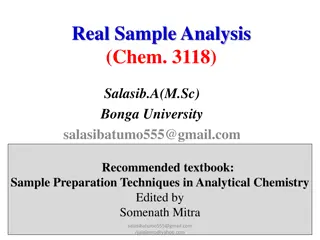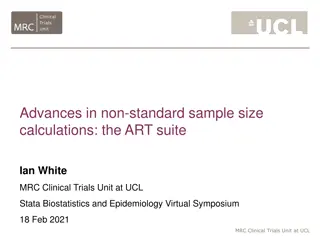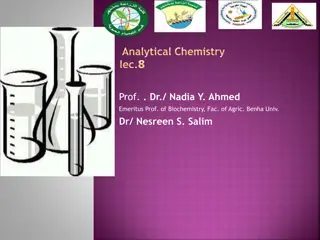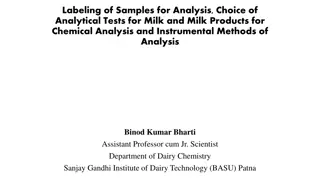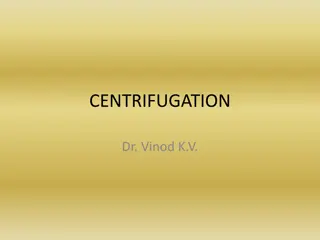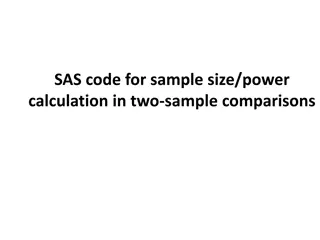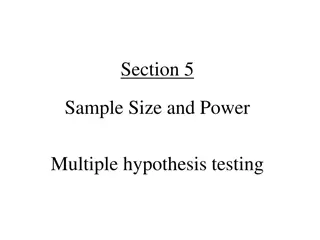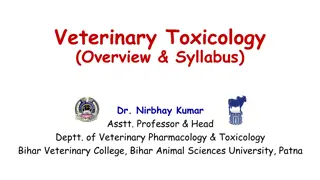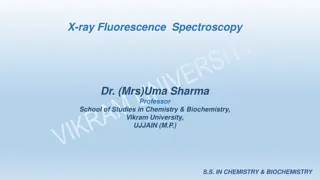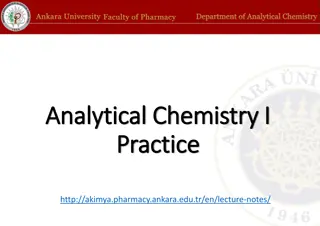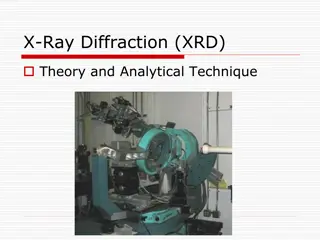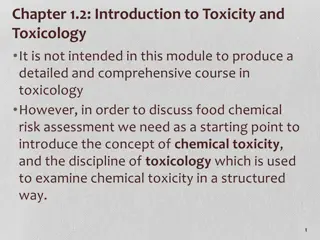Analytical Toxicology: Techniques and Sample Analysis in Clinical Toxicology
Analytical toxicology involves the observation, identification, and measurement of foreign compounds in biological and other samples, such as urine, blood, stomach contents, nails, hair, and DNA. Various techniques are used to isolate and identify drugs and poisons present in these samples. This field is crucial for detecting drugs, toxins, and xenobiotics, especially in forensic specimens. The analysis of biological specimens like urine, blood, and stomach contents helps in assessing toxicity levels, while nail and hair samples provide insight into long-term drug exposure. Liquid chromatography coupled with mass spectrophotometry is a common method used for drug analysis in samples. Toxicology laboratories employ a range of qualitative and quantitative methods to determine the presence and concentration of substances in complex biological specimens.
Download Presentation

Please find below an Image/Link to download the presentation.
The content on the website is provided AS IS for your information and personal use only. It may not be sold, licensed, or shared on other websites without obtaining consent from the author.If you encounter any issues during the download, it is possible that the publisher has removed the file from their server.
You are allowed to download the files provided on this website for personal or commercial use, subject to the condition that they are used lawfully. All files are the property of their respective owners.
The content on the website is provided AS IS for your information and personal use only. It may not be sold, licensed, or shared on other websites without obtaining consent from the author.
E N D
Presentation Transcript
Lab. Title: Toxicological Analysis Lab. Three in Clinical Toxicology ''Fifth Year Students'' First Semester (2021-2022) By: Dr. Kassim Al-Saedi
Background: Analytical toxicology Analytical toxicology is the observation, identification, and measurement of foreign compounds (xenobiotics) such in biological and other sample such as residues in syringes or in soil. Analytical processes are accessible for a very wide range of compounds: these may be chemicals, pesticides, pharmaceuticals, drugs of abuse and natural toxins. It is of greatest concern in forensic specimens.
Background (Continued): Biological specimens of concern include: Urine: to detect the presence of drugs and/or its metabolites in the urine sample. Blood: to detect the presence of drugs and/or its metabolites in the sample. Stomach contents: fragments of the ingested xenbiotics can be detected. Sometimes biochemical tests, hematological, and observational ones are used as a tool to assess victim status during toxicity as monitoring aids during toxicity treatment.
Urine, Blood, & Stomach contents as a Samples for detection.
Nail, Hair, and DNA as samples for Toxicological Analysis: Nails: Drug analysis in keratinized matrices, such as hair and nails, has received considerable significance . Long term exposures to different drugs result in their accumulation . Nails have been shown to accumulate drugs following a long duration of drug intake. Finger and toenails can accumulate drugs during long term exposure In a study, determinations were done in fingernail and toenail samples originating from individuals who had been administered flupentixol, an antidepressant, in therapeutic doses for at least 12 months before sample collection using liquid chromatography coupled with electrospray-ionization mass spectrophotometry (LC-ESI-MS).
Nail, and Hair as samples for Toxicological Analysis: Continued The nail flupentixol concentration was within the range of 0.086-0.109 ng/mg and 0.036-0.042 ng/mg after 4 and 6 months respectively of discontinuation of the drug. With passing months, the levels dropped further and flupentixol was no longer found in nails after ten months of therapy.
Techniques Used in Toxicological Analysis: To isolate and identify drugs and poisons from complex biological specimens, several qualitative and quantitative methods of analysis are used to determine which drugs or poisons are present, and at what concentration. Toxicology laboratories use a variety of different techniques, including: Gas and liquid chromatography, Mass spectrometry, Spectrophotometry, and antibody-based immunoassays such as ELISA.
Qualitative Detection of Codeine and Methadone in Urine Sample Using TLC Technique.
Qualitative Detection of Codeine and Methadone Using TLC Technique.
Qualitative Detection of Phenothiazine in Urine Using FPN Test Technique. This test solution consists of 5 parts of 5 % ferric chloride, 45 parts of 20 % perchloric acid, and 50 parts of 50 % nitric acid (subsequently referred to as FPN). This test solution produces immediate color reactions with the urines of patients who have ingested any phenothiazine compound, including the various antihistaminic compounds of this group. In this test, 1 ml. of FPN test solution is mixed with 1 ml. urine. In the lowest phenothiazine levels, corresponding to drug intakes of 5 to 20 mg. per day, the yellow urine color turns to a light pinkish-orange, while daily drug doses of 25 to 70 mg. produce reactions in various shades of pink. Drug doses of 75 to 120 mug. daily yield increasingly intense shades of violet, while doses of 125 rug, and more are reflected by deep purple reactions of increasing opaqueness and ink like appearance.
Qualitative Detection of Phenothiazine in Urine Using FPN Test Technique.
